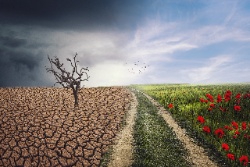Kerbside Standardisation A Game Changer
Plastics New Zealand’s CEO Rachel Barker was extremely pleased to hear that kerbside standardisation had been announced.
We’ve been waiting a long time for this decision. Our current recycling systems vary hugely from council to council, and this leads to a high level of confusion for the public. Requiring all councils to collect the same materials, allows national education around what is and isn’t recyclable in Aotearoa. Standardisation means a consistent message can be developed, which helps people to recycle better. This will change behaviours, boost recycling rates and ensure that materials stay in the system. The more resources we can recover and use for remanufacturing, the better this will be for the planet. We’ll divert materials from landfill, reduce pollution, virgin resource use, and reduce our global carbon footprint.
Ms Barker also found the list of specified plastic types to be reasonable and well considered.
Plastics New Zealand has done a lot of work to encourage Councils to collect the three main kerbside collected plastics, #1 (PET), #2 (HDPE) and #5 (PP). These three materials make up more than 75% of the plastic packaging across our recycling and refuse bins and are all able to be recycled into NZ-made products right here in Aotearoa. Councils have been responsive. and we’ve seen good improvement in national collections.
The remaining plastic types are in either very small amounts or much harder to recycle. Some of these, such as PVC (#3) and rigid polystyrene (#6) are also subject to phaseouts under government regulations coming into force this year and in 2025. Removal of these materials from recycling bins will help strengthen our resource recovery systems, reduce the costs of sorting and reprocessing, and generally enable more efficient onshore recycling.
Plastics New Zealand strongly supports the focus on a low-emissions circular economy for all resource types outlined by the new Waste Strategy. Focusing on one resource type, plastic, leads to unintended consequences and outright environmental harm in some scenarios. A material agnostic approach, which ensures all resources are recovered, maintained at a high value, and reused, ensures the best outcomes as New Zealand pursues it’s zero waste and zero carbon ambitions.
A national focus on circularity for all resource types, will enable collection and sorting systems, material movements (shipping), and recycling to be as efficient and cost effective as possible. We also expect it to maximise onshore reprocessing of these material into new products and packaging.
The new waste strategy is simply the starting point. Much work in developing regulations and action plans to deliver the strategy will be required. To achieve a low-emissions, low-waste circular economy, all of us who form the system must play our part to create the change. This includes everyone from national and local government to industry and community groups, right through to the individuals placing the materials into their bins.


 Tourism Industry Aotearoa: TRENZ Bids Goodbye To The Capital, And Hello To Rotorua
Tourism Industry Aotearoa: TRENZ Bids Goodbye To The Capital, And Hello To Rotorua Impression Real Estate: Property Manager Launches New Training Standard As Govt Abandons Regulation
Impression Real Estate: Property Manager Launches New Training Standard As Govt Abandons Regulation University of Canterbury: What Makes People Tick Environmentally?
University of Canterbury: What Makes People Tick Environmentally? Gallagher Security: Release Of New Command Centre Unlocks New Era Of Security Tech
Gallagher Security: Release Of New Command Centre Unlocks New Era Of Security Tech Fix & Fogg: NASA Hand-picks Kiwi Nut Butter Brand To Travel To Space In NZ First
Fix & Fogg: NASA Hand-picks Kiwi Nut Butter Brand To Travel To Space In NZ First Citizens of the Sea: Sailors To Revolutionise Our Understanding Of Pacific Biodiversity
Citizens of the Sea: Sailors To Revolutionise Our Understanding Of Pacific Biodiversity



